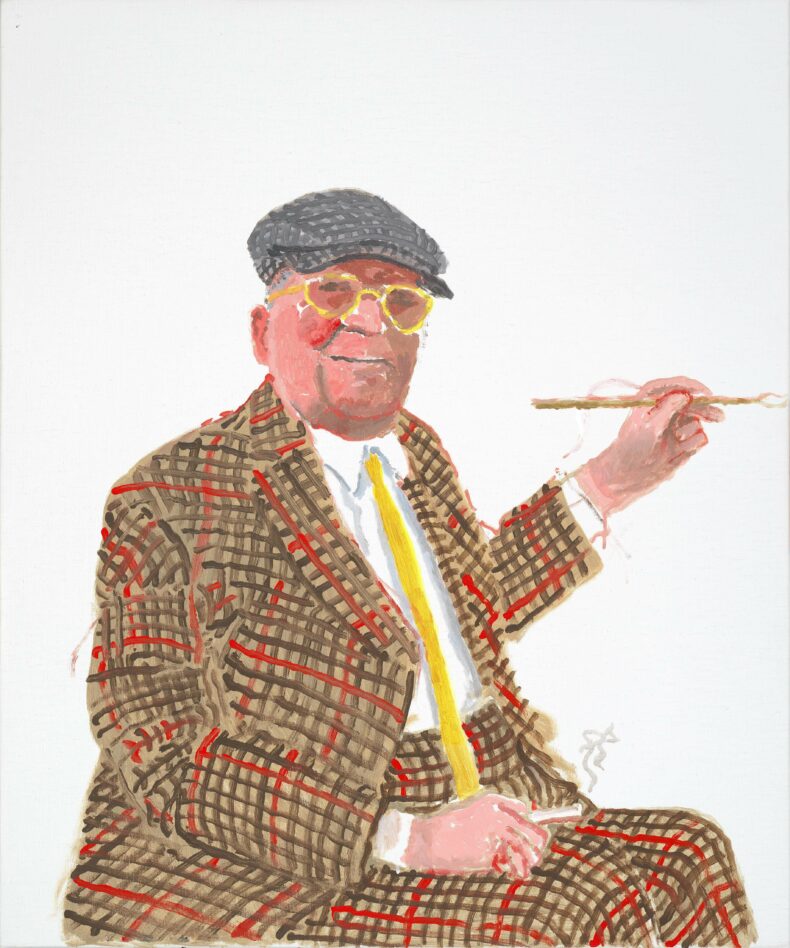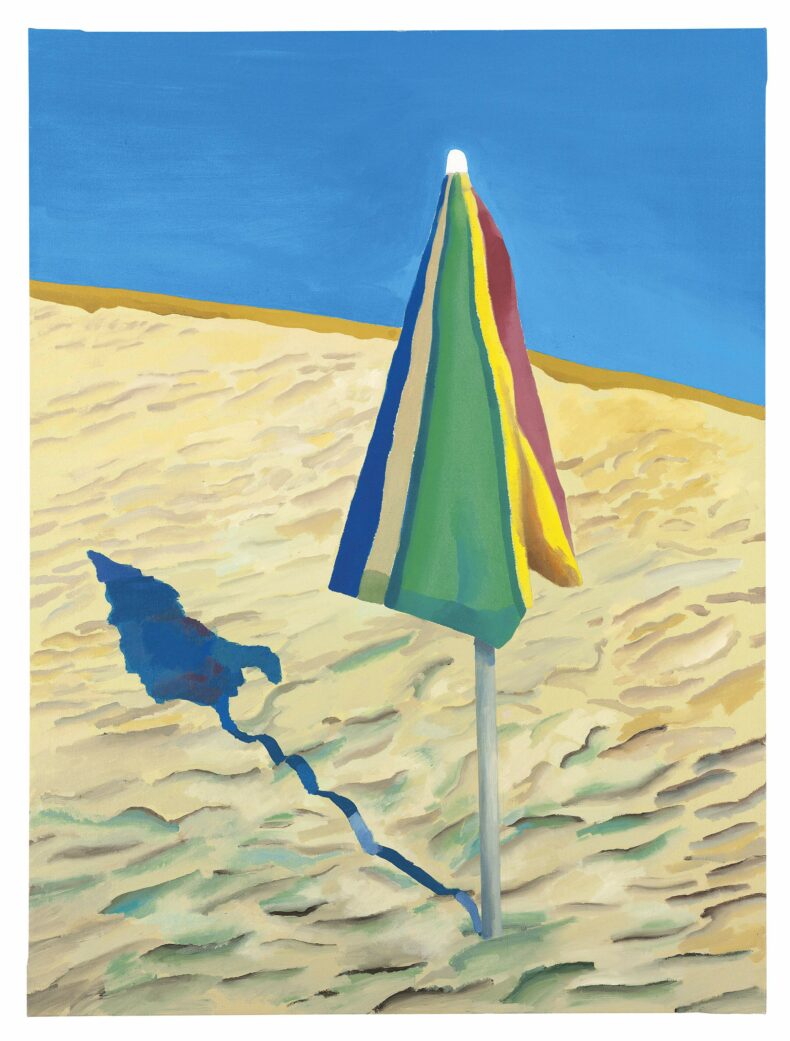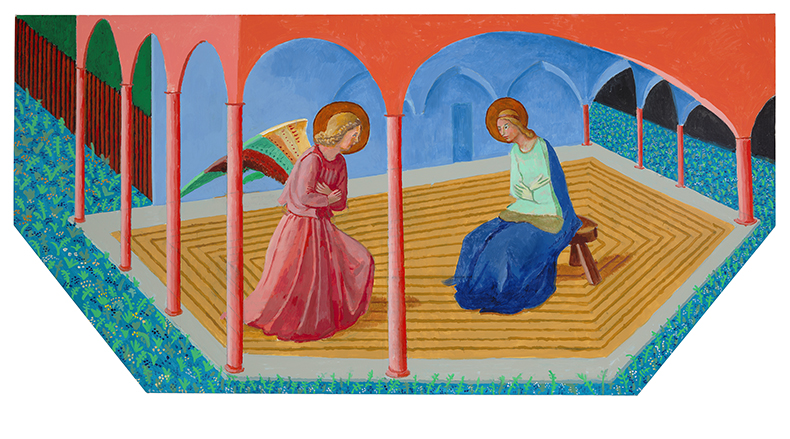On the lawn in front of the neoclassical facade of the Fitzwilliam Museum in Cambridge there currently stands a small lime-green octagonal shed with a conical roof, reminiscent of a postmodern jousting pavilion. It is a camera obscura: a darkroom inside which a 360º view of the outside world is projected on to a horizontal disc. A wheel and pully overhead allow the viewer to control what circular portion of the museum building and the street opposite they wish to view. As the wheel turns, the world is made to somersault, turning almost inside out before coming back to rest at its starting point. When I visit on a bright spring day, the image projected is luminous and its focus razor-sharp, hyperreal even. The camera obscura is part of the exhibition ‘Hockney’s Eye: The Art and Technology of Depiction’. Visitors are advised to see it after the main show: it encapsulates the links that the exhibition’s curators make between Hockney’s philosophy and artistic practice, which contemplates the nature of human vision and perception and the difficulties (and opportunities) of translating a three-dimensional world on to a flat surface.
The exhibition succeeds in making this vibrantly clear to visitors, through a combination of demonstrations of early-modern optics alongside documentary films about the artist. Afterwards, the camera obscura remains as a lens through which to reflect on Hockney’s works and the museum’s Old Masters with which they are juxtaposed.

Self-portrait, 22nd November 2021 (2021), David Hockney. © David Hockney
A film on display at another outpost of the exhibition, at the Heong Gallery in Downing College, reveals Hockney’s preoccupation with the material restrictions that he says have been imposed on Western artists by traditions stemming from the Renaissance, a period whose artistic practice, Hockney believes, was in fact shaped by early optical and camera technology. In the film, Hockney studies a 17th-century Chinese scroll painting. At 70 feet in length, it cannot be seen all at once, but it can be gradually rolled through, seemingly for ever. The creator of the scroll painting, Wang Hui, distorts, or simply ignores, the more realistic fixed perspective that would be a requisite of Western art of the same period, to lead the beholder’s eye through each scene: over a bridge and up a street in one instance, or through a market and into each of its shops, where fish, rice and other goods – minute objects in the grand scheme of the painting – are rendered with equal care and precision. While Hockney has referred to the restrictions that the scroll painting appears to reject as ‘imperialism’, the exhibition’s curators are careful not to express a view. But it is Hockney’s scepticism of these apparent norms that drives his work, and which forms the basis of the show.

Beach Umbrella (1971), David Hockney. © David Hockney
Back at the Fitzwilliam, the main exhibition flows freely through the museum’s halls, where Hockney’s works are highlighted with backdrops painted in the same lime green as the camera obscura. The visitor views – or remembers – the art on display, old and new, with a newly critical gaze. The first painting that visitors see is a recent self-portrait contributed by Hockney. In it, the artist sits at a three-quarter angle, with head looking straight out from the canvas. The daubs with which the yellow frames of his glasses and his ruddy skin are painted obscure his left eye (or is it his right one in mirror?). The portrait that he seems to be working on is perpendicular to the picture plane and lies just beyond the right edge of the canvas, which the tip of his brush touches. Imagining a three-dimensional space within the portrait opens up an infinite spiral of Hockneys painting Hockneys, each blurrier and more impressionistic than the last. Later in the show there is a painting of a lone furled umbrella on a beach, oppressively sunlit and throwing an arrow-like shadow that points beyond the frame. The viewer’s eye drifts in the same direction, and one wonders how far the seashore might extend beyond the segment we see: perhaps infinitely in a straight line? Might it eventually loop back on itself, as around a sphere or an island?
A response to Fra Angelico’s Annunciation (c. 1440–45), placed alongside the Fitzwilliam’s own panel painting of the same episode by Domenico Veneziano, turns the composition practically inside out and intensifies the colours to such a degree that the soft furnishings of Mary’s home could have been picked out by Richard Rogers. Similarly, a painting in the Heong Gallery showing a sweep of the Grand Canyon deploys a fish-eye effect to encompass the full extent of this most American of natural wonders.

Annunciation II, after Fra Angelico from The Brass Tacks Triptych (2017), David Hockney. Photo: Richard Schmidt; © David Hockney
Hockney’s own use of the optical technology that has been available to artists over the centuries – for example, an early-modern camera lucida used in portraits of the National Gallery’s security guards – naturally features in this exhibition. But given his instinct to question different forms of technology and their consequences for pre-modern artists, how might he have responded to the latest gadgetry available in our own time? His iPad sketches, mostly self-portraits and rapid still-lives of flowers that he sends to friends, appear to do little to consider this question and in quality fall short of his physical works. Nor does the exhibition suggest any interest in the three-dimensional virtual art that can be made with VR technology.
The most striking application of technology in the exhibition is provided by a display of the most recent computational methods for analysing historic works of art. Thanks to a collaboration with department of art history at the University of Cambridge, a film produced by the digital art project Florence4D demonstrates a reconstruction of the perspectival backdrop of a street scene by Veneziano. It turns out that the artist manipulated the real street in Florence to create a more pleasing vanishing point for his image. Perhaps, then, Hockney is wrong to assume that optical technology such as the camera obscura has only confined artists: the methods of depiction that he has developed may not be such a revolution after all, for all their chromatic splendour and compositional shrewdness.
‘Hockney’s Eye: The Art and Technology of Depiction’, is at the Fitzwilliam Museum, Cambridge, until 29 August.












![Masterpiece [Re]discovery 2022. Photo: Ben Fisher Photography, courtesy of Masterpiece London](http://zephr.apollo-magazine.com/wp-content/uploads/2022/07/MPL2022_4263.jpg)
Apollo at 100